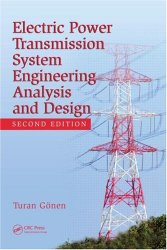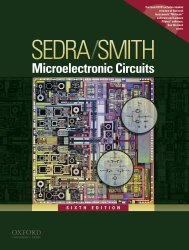A field of engineering that generally deals with the study and application of electricity, electronics, and electromagnetism. This field first became an identifiable occupation in the latter half of the 19th century after commercialization of the electric telegraph, the telephone, and electric power distribution and use. It now covers a wide range of subfields including electronics, digital computers, power engineering, telecommunications, control systems, RF engineering, and signal processing.
Power Engineering - Subfield of electrical engineering that deals with the generation, transmission, distribution and utilization of electric power as well as the electrical devices connected to such systems including generators, motors and transformers.
Computer Engineering - Discipline that integrates several fields of electrical engineering and computer science required to develop computer hardware and software. Computer engineers usually have training in electronic engineering or electrical engineering, software design, and hardware-software integration instead of only software engineering or electronic engineering.
Control Engineering - Discipline that applies control theory to design systems with desired behaviors. The practice uses sensors to measure the output performance of the device being controlled and those measurements can be used to give feedback to the input actuators that can make corrections toward desired performance.
Electronic Engineering - An engineering discipline where non-linear and active electrical components such as electron tubes, and semiconductor devices, especially transistors, diodes and integrated circuits, are utilized to design electronic circuits, devices and systems, typically also including passive electrical components and based on printed circuit boards.
Microelectronics Engineering - Subfield of electronics. As the name suggests, microelectronics relates to the study and manufacture (or microfabrication) of very small electronic designs and components. Usually, but not always, this means micrometre-scale or smaller. These devices are typically made from semiconductor materials. Many components of normal electronic design are available in a microelectronic equivalent. These include transistors, capacitors, inductors, resistors, diodes and (naturally) insulators and conductors can all be found in microelectronic devices.
Signal Processing - An area of systems engineering, electrical engineering and applied mathematics that deals with operations on or analysis of analog as well as digitized signals, representing time-varying or spatially varying physical quantities. Signals of interest can include sound, electromagnetic radiation, images, and sensor readings.
Telecommunications Engineering - Discipline that brings together electrical engineering with computer science to enhance telecommunication systems. The work ranges from basic circuit design to strategic mass developments. A telecommunication engineer is responsible for designing and overseeing the installation of telecommunications equipment and facilities, such as complex electronic switching systems, copper wire telephone facilities, and fiber optics.
Instrumentation Engineering - Instruments attached to a control system may provide signals used to operate solenoids, valves, regulators, circuit breakers, or relays. These devices control a desired output variable, and provide either remote or automated control capabilities. These are often referred to as final control elements when controlled remotely or by a control system.
 Protective Relaying: Principles and Applications
Protective Relaying: Principles and Applications Electrical Power Transmission System Engineering: Analysis and Design
Electrical Power Transmission System Engineering: Analysis and Design Process Control Instrumentation Technology
Process Control Instrumentation Technology Fiber Optic Communications
Fiber Optic Communications Digital Signal Processing: A Practical Approach
Digital Signal Processing: A Practical Approach Microelectronic Circuits
Microelectronic Circuits